From the Trenches
Splendid Surprise
By JARRETT A. LOBELL
Tuesday, October 15, 2013
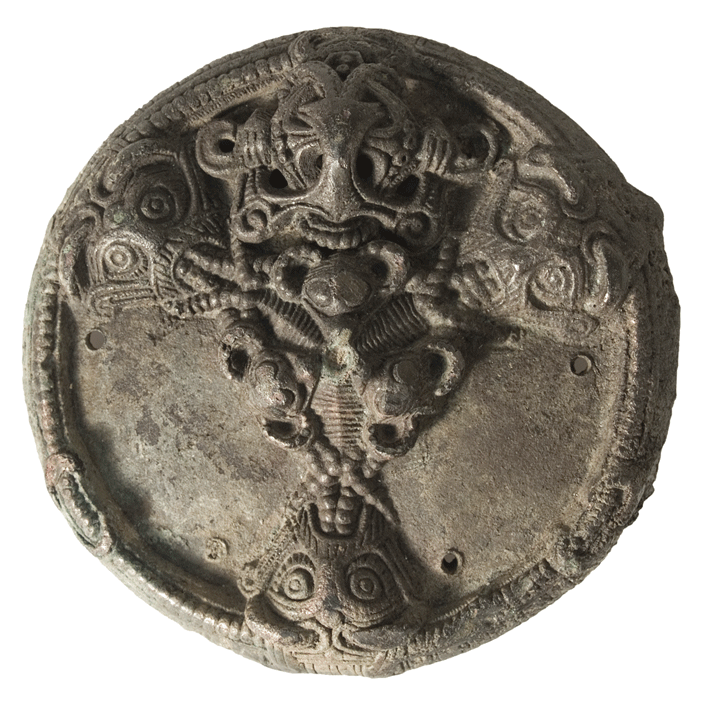
At Vestervang, on the Danish island of Zealand, archaeologists and metal detectorists have uncovered 20 stunning pieces of Iron Age jewelry. While most of the adornments date to the Viking period and are made of bronze, some of them are gilded or covered in gold foil. All but two pieces are Scandinavian in origin.
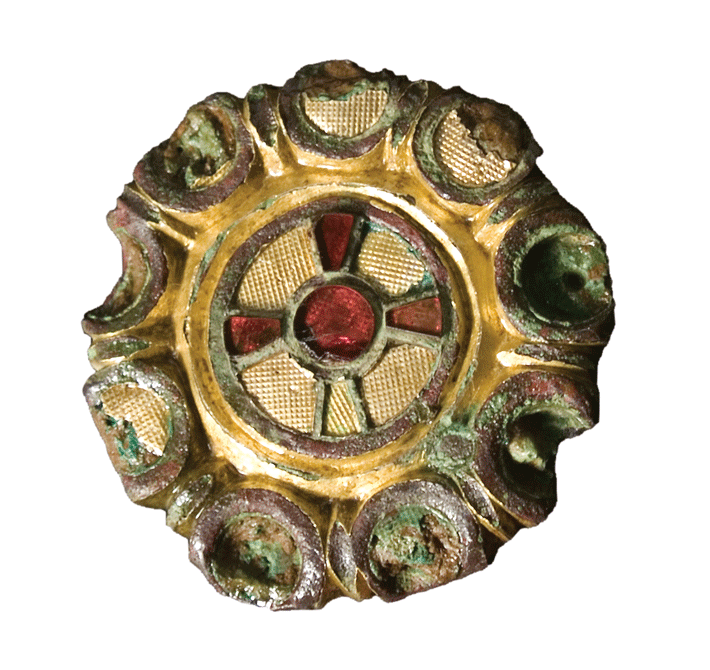 Vestervang was, for many centuries, a fairly modest farmstead. Thus, archaeologist Ole Kastholm of the Roskilde Museum was surprised to find such lavish artifacts there. “My explanation for the richness of the finds is that the farmstead was owned by one of the Viking king’s retainers. Furthermore, the site is close to the town of Lejre, which was the capital city of Zealand between A.D. 500 and 1000.”
Vestervang was, for many centuries, a fairly modest farmstead. Thus, archaeologist Ole Kastholm of the Roskilde Museum was surprised to find such lavish artifacts there. “My explanation for the richness of the finds is that the farmstead was owned by one of the Viking king’s retainers. Furthermore, the site is close to the town of Lejre, which was the capital city of Zealand between A.D. 500 and 1000.”
Off the Grid
By MALIN GRUNBERG BANYASZ
Tuesday, October 15, 2013
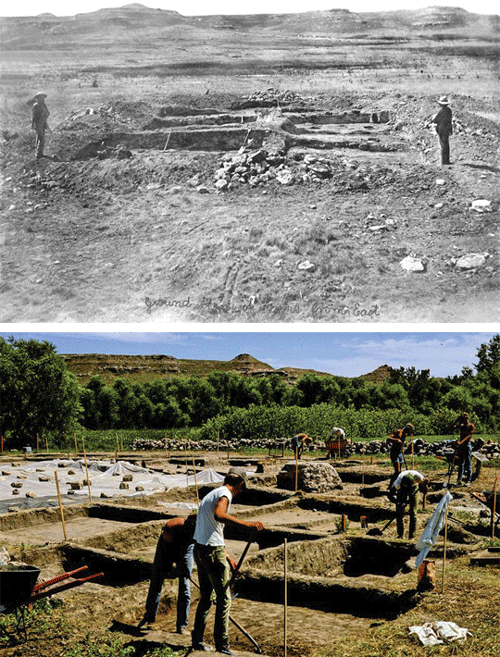 You might say, “Toto, I have a feeling we’re not in Kansas anymore,” when you first lay eyes on El Cuartelejo. But you’d be wrong. Built in western Kansas in the 1600s by the Taos Indians, El Cuartelejo is the northeasternmost pueblo in North America and the only one in the Jayhawk State, according to Robert J. Hoard, state archaeologist. The high plains of Kansas are known for being dry and flat, but the site is surrounded by canyons and bluffs, shielding it from adverse weather and making it an appealing place for a pueblo. El Cuartelejo also has good access to water and to stone for construction and tool-making. Even today, Hoard says, the area is so lush that it supports grapevines. The pueblo was inhabited by the Taos Indians for several years before Spanish soldiers escorted them back to their Southwestern homeland, and later by a group of Picuris Indians between 1696 and 1706.
You might say, “Toto, I have a feeling we’re not in Kansas anymore,” when you first lay eyes on El Cuartelejo. But you’d be wrong. Built in western Kansas in the 1600s by the Taos Indians, El Cuartelejo is the northeasternmost pueblo in North America and the only one in the Jayhawk State, according to Robert J. Hoard, state archaeologist. The high plains of Kansas are known for being dry and flat, but the site is surrounded by canyons and bluffs, shielding it from adverse weather and making it an appealing place for a pueblo. El Cuartelejo also has good access to water and to stone for construction and tool-making. Even today, Hoard says, the area is so lush that it supports grapevines. The pueblo was inhabited by the Taos Indians for several years before Spanish soldiers escorted them back to their Southwestern homeland, and later by a group of Picuris Indians between 1696 and 1706.
The site
In the mid-1890s, the site now known as El Cuartelejo was excavated by two professors from the University of Kansas. They found the lower portions of stone walls that formed the foundation of a pueblo, inside of which were artifacts such as stone and bone tools, ornaments, and pottery sherds, some of which came from the pueblos of the Southwest. In 1970, Tom Witty of the Kansas State Historical Society excavated further, and unearthed the entire pueblo floor, hearths, and postholes. He also found evidence of an Apache roasting pit that predates the pueblo ruins. El Cuartelejo, which means “old barracks” or “old building,” was a seven-room pueblo, and visitors (the site is in Scott State Park and open to the public) can see its reconstructed foundation covering about 1,600 square feet. Archaeologists have found postholes in pairs, indicative of ladders that allowed access to doorless rooms in typical pueblo style. There are several related sites nearby. The El Quartelejo Museum in Scott City has exhibits that include artifacts and fossils, early Native American camp scenes, and a replica of the pueblo.
While you’re there
The nearby landscape doesn’t look like Kansas at all, but more like the Southwest, with rock formations carved by sand and wind. Some of the Monument Rocks, also known as the Chalk Pyramids, are more than 70 feet tall. In addition to these natural wonders, be sure to check out Punished Woman’s Fork, where the last Native American battle in Kansas was fought. There, a monument overlooks the cave, canyon, and bluffs where the Northern Cheyenne waited to ambush the United State cavalry. For a bite, stop by Charlie’s Mexican restaurant in Leoti, just southwest of El Cuartelejo, which has served family-recipe Mexican fare for 50 years.
An Imperial Underworld
By ROSSELLA LORENZI
Tuesday, October 15, 2013
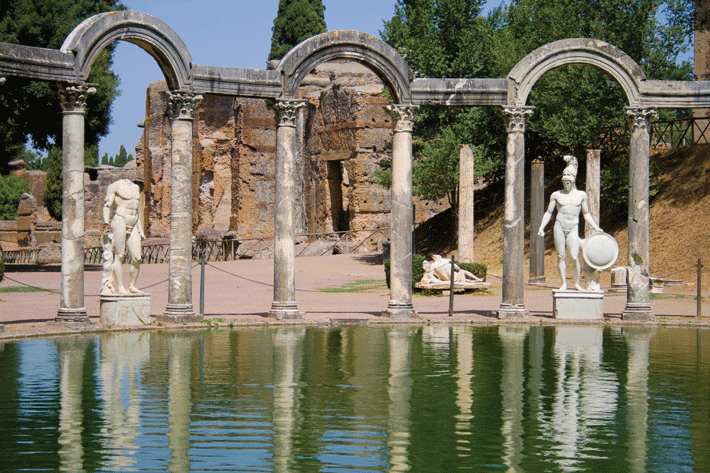
A group of Italian caving enthusiasts, investigating a small hole in the ground concealed by bushes, discovered surprising information about the inner workings of ancient Rome’s most impressive imperial residence. Hadrian’s Villa is located in Tivoli, 15 miles east of Rome. Construction on the site began in A.D. 118, a year after Hadrian became emperor, and was completed a decade later. Some time ago, archaeologists realized that there was a network of roads under the estate, says Marco Placidi, director of Underground Rome, the group that made the discovery. “As we explored the roads, we discovered another world,” he says. “The villa’s grandeur is reflected underground.”
Many parts of the estate, which once covered 600 acres, were designed by Hadrian himself, and were based on famous buildings in Egypt and in Greece. The site is organized like a city, complete with palaces, libraries, thermal baths, theaters, courtyards, and landscaped gardens watered by canals and fountains. In its day, the villa’s subterranean world would have bustled with the activity of people charged with running the sprawling imperial palace as smoothly and quietly as possible. Tunnels and passageways allowed thousands of slaves to move discreetly from the basement of one building to that of another, enabled the movement of ox carts loaded with food and goods destined for underground storage, and accommodated sewers and water pipes. “These underground passageways have long been known,” says Benedetta Adembri, the director of the site. But Placidi’s team has discovered a new tunnel double the width—an astonishing 19 feet wide—of any previously found. This roadway would have allowed for two-way traffic.
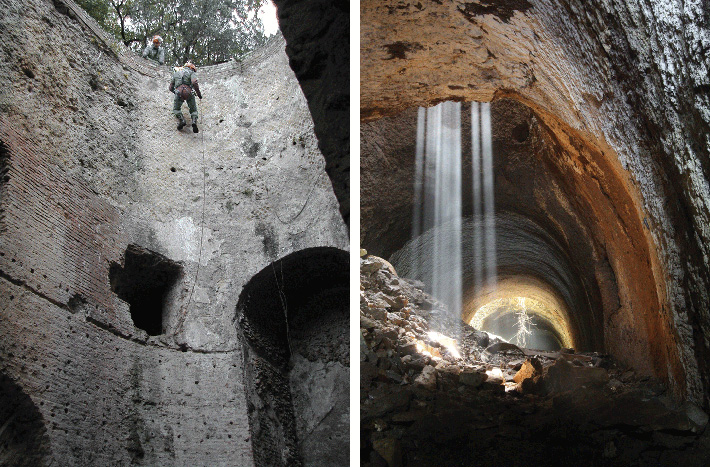
Although the newly discovered tunnel is filled with debris nearly to the roof, the team, using a remote-controlled robot equipped with a camera, determined that it runs nearly straight, at least as far as the robot can go. “But,” says Placidi, “we can only imagine where this new road ends.”
Consisting of volunteer speleologists trained in archaeological research, Placidi’s group has worked at Hadrian’s Villa since 2001, thanks to an agreement with Italian heritage authorities. The team’s results demonstrate that amateurs and archaeologists can collaborate successfully—so long as it is done carefully. “Sometimes amateurs can do damage, but that’s not our experience. These volunteers are certified speleologists who scrupulously follow scientific protocol and work under the direction of our archaeologists,” Adembri says. Given the lack of funding plaguing Italian archaeological projects, Placidi’s group “provides valuable help, indeed,” he adds. Adembri hopes to open part of the tunnels to guided tours this year.
Advertisement
Advertisement
IN THIS ISSUE
From the Trenches
An Imperial Underworld
Off the Grid
Splendid Surprise
Neanderthal Tool Time
Dutchman Out of His Depth
Catching a Ride from Ireland
The Snake King's New Vassal
Spying the Past from the Sky
Byzantine Riches
The Neolithic Palate
Secrets of Life in the Soil
Who Was First to the Faroes?
Drones Enter the Archaeologist's Toolkit
Advertisement

Recent Issues
-
 May/June 2024
May/June 2024
-
 March/April 2024
March/April 2024
-
 January/February 2024
January/February 2024
-
 November/December 2023
November/December 2023
-
 September/October 2023
September/October 2023
-
 July/August 2023
July/August 2023
-
 May/June 2023
May/June 2023
-
 March/April 2023
March/April 2023
-
 January/February 2023
January/February 2023
-
 November/December 2022
November/December 2022
-
 September/October 2022
September/October 2022
-
 July/August 2022
July/August 2022
-
 May/June 2022
May/June 2022
-
 March/April 2022
March/April 2022
-
 January/February 2022
January/February 2022
-
 November/December 2021
November/December 2021
-
 September/October 2021
September/October 2021
-
 July/August 2021
July/August 2021
-
 May/June 2021
May/June 2021
-
 March/April 2021
March/April 2021
-
 January/February 2021
January/February 2021
-
 November/December 2020
November/December 2020
-
 September/October 2020
September/October 2020
-
 July/August 2020
July/August 2020
-
 May/June 2020
May/June 2020
-
 March/April 2020
March/April 2020
-
 January/February 2020
January/February 2020
-
 November/December 2019
November/December 2019
-
 September/October 2019
September/October 2019
-
 July/August 2019
July/August 2019
-
 May/June 2019
May/June 2019
-
 March/April 2019
March/April 2019
-
 January/February 2019
January/February 2019
-
 November/December 2018
November/December 2018
-
 September/October 2018
September/October 2018
-
 July/August 2018
July/August 2018
-
 May/June 2018
May/June 2018
-
 March/April 2018
March/April 2018
-
 January/February 2018
January/February 2018
-
 November/December 2017
November/December 2017
-
 September/October 2017
September/October 2017
-
 July/August 2017
July/August 2017
-
 May/June 2017
May/June 2017
-
 March/April 2017
March/April 2017
-
 January/February 2017
January/February 2017
-
 November/December 2016
November/December 2016
-
 September/October 2016
September/October 2016
-
 July/August 2016
July/August 2016
-
 May/June 2016
May/June 2016
-
 March/April 2016
March/April 2016
-
 January/February 2016
January/February 2016
-
 November/December 2015
November/December 2015
-
 September/October 2015
September/October 2015
-
 July/August 2015
July/August 2015
-
 May/June 2015
May/June 2015
-
 March/April 2015
March/April 2015
-
 January/February 2015
January/February 2015
-
 November/December 2014
November/December 2014
-
 September/October 2014
September/October 2014
-
 July/August 2014
July/August 2014
-
 May/June 2014
May/June 2014
-
 March/April 2014
March/April 2014
-
 January/February 2014
January/February 2014
-
 November/December 2013
November/December 2013
-
 September/October 2013
September/October 2013
-
 July/August 2013
July/August 2013
-
 May/June 2013
May/June 2013
-
 March/April 2013
March/April 2013
-
 January/February 2013
January/February 2013
-
 November/December 2012
November/December 2012
-
 September/October 2012
September/October 2012
-
 July/August 2012
July/August 2012
-
 May/June 2012
May/June 2012
-
 March/April 2012
March/April 2012
-
 January/February 2012
January/February 2012
-
 November/December 2011
November/December 2011
-
 September/October 2011
September/October 2011
-
 July/August 2011
July/August 2011
-
 May/June 2011
May/June 2011
-
 March/April 2011
March/April 2011
-
 January/February 2011
January/February 2011
Advertisement






